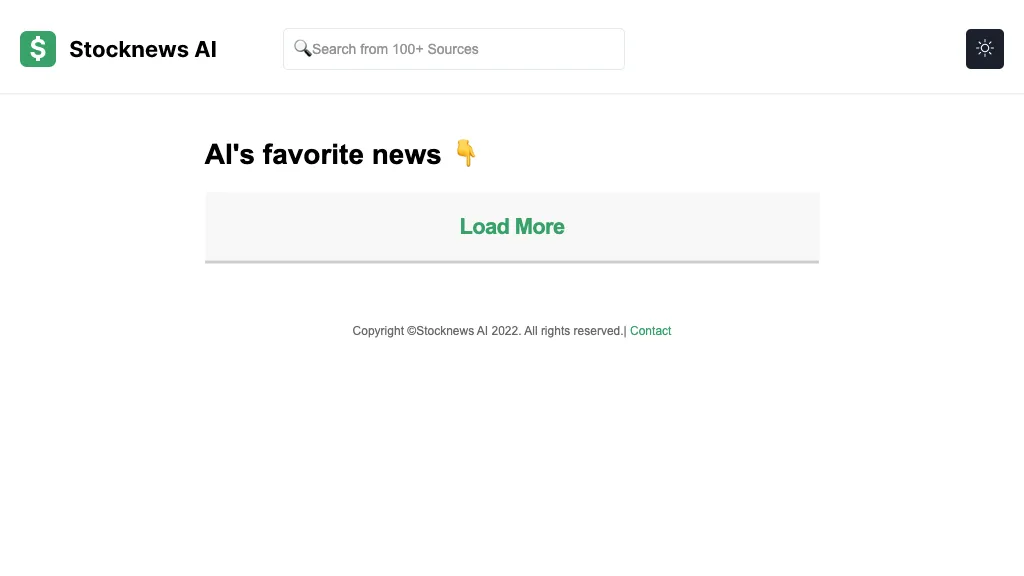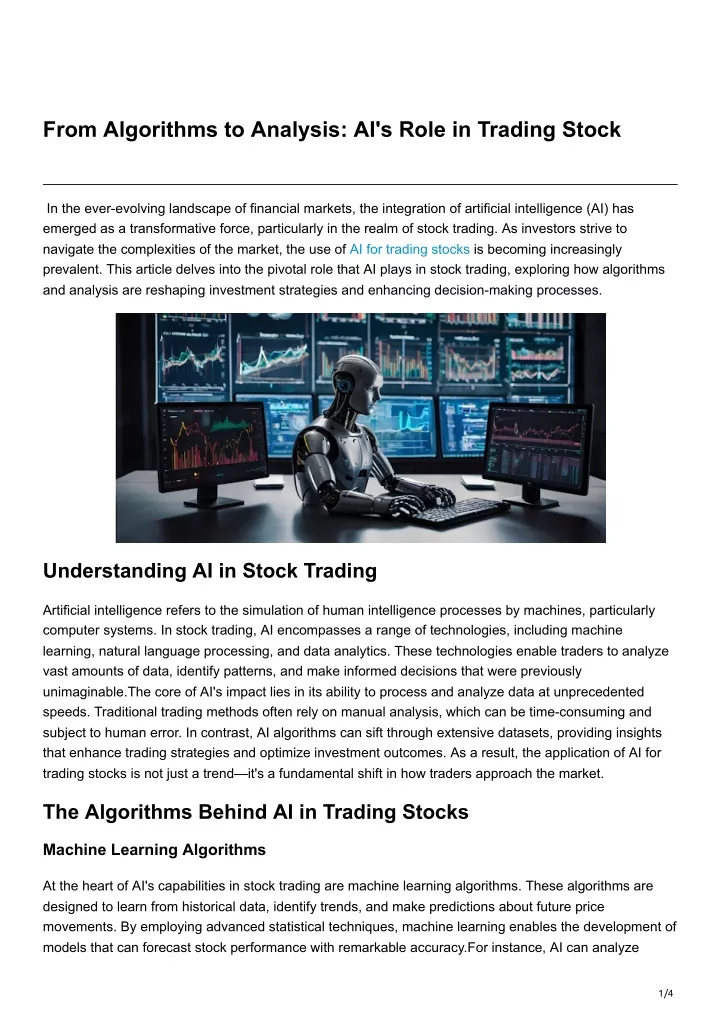20 New Tips On Choosing AI Stock Predictions Analysis Websites
20 New Tips On Choosing AI Stock Predictions Analysis Websites
Blog Article
Top 10 Tips On Assessing The Security And Privacy Of Ai Analysis And Stock Prediction Platforms
Because they often handle sensitive financial information, and even personal data, security and protection of the data is crucial. Data breaches or mishandling could result in reputational and financial damage. Here are the top ten tips for assessing the security and privacy of these platforms
1. Think about Data Encryption
Encryption in transit: Ensure your platform is using secure protocols (e.g., TLS/SSL) to protect data that is transmitted between your device and the servers.
Encryption of sensitive data at rest: Check the security of sensitive data on the platform's server using strong encryption standard (e.g. AES-256).
Make sure the platform supports end-toend encryption of sensitive data or communications.
2. Examine Authentication Measures
Two-factor authentication (copyright) Check if the platform supports copyright to provide an additional layer of security.
Biometric authentication: Check whether the platform supports biometric login methods (e.g. fingerprints or facial recognition) for mobile applications.
Password policies. Check if the platform is enforcing strong password policies (e.g. minimum length or minimum complexity, etc.).
3. Verify compliance with the regulations.
Financial regulations: Ensure platform conforms to the relevant financial regulations (e.g. SEC, FINRA or MiFID II).
Laws on data protection: Ensure compliance with privacy laws (e.g. GDPR, GDPR CCPA) If you're in or trading with regions covered by these laws.
Audit certifications - Verify to see if the system is accredited or has been subject to third-party security audits (e.g. SOC 2, ISO 27001).
Review Data Access Controls
Role-based access: Make sure the platform uses role-based access controls (RBAC) to limit access to data to only authorized users.
Check if you are able to assign permissions on a granular level for various team members.
Activity monitoring. Check whether your platform tracks and monitors the user's activity.
5. Examine Vulnerability Management
Regular updates: Ensure that your platform is updated regularly its software in order to patch security holes.
Testing for penetration: Check whether the platform is subject to regular penetration testing to identify and correct security vulnerabilities.
Bug bounty programs: Verify whether there is a bug bounty program available on the platform to motivate security researchers from other sources to report vulnerabilities.
6. Evaluate Data Privacy Policies
Transparency. Check out the Privacy Policy to understand what data is collected and how it will be used.
Data minimization - Ensure that the platform collects the information it requires for its operation.
Data sharing with third parties: Check whether the platform is prepared to share your data with a third party, and, if you are then, in what way.
7. Check for Secure API Usage
API security: Ensure the API of the platform API utilizes secure authentication methods (e.g., OAuth, API keys) and secures data exchanges.
Limiting the rate. Verify the API's rate limitation to prevent abuse.
Check the access logs to determine if they're being recorded for monitoring and auditing.
8. Assess Incident Response & Recovery
Plan for incident response The platform is equipped with a strategy to deal with data breaches and security incidents.
Policies for notification: Make sure that users are informed promptly in the event of a security breach.
Backups of data: Make sure that the platform regularly backs up its data on a regular basis and has a disaster recovery plan.
9. Review the physical security measures
Security of the data center - Make sure that the platform's server is located in a secure data center that have physical security (e.g. surveillance, access control).
Redundancy Verify whether the platform is using redundant systems for information in the event of hardware failures.
Geographic distribution: Check if data is distributed over multiple geographical locations to ensure greater protection.
10. Test user privacy controls
Data deletion: Ensure the platform will allow you to erase your personal information permanently when you cease using the service.
Privacy settings: Make sure to check whether the platform offers privacy settings to limit what data is public or shared.
Verify that the platform is anonymized. This is essential when you use the platform for analytics or machine-learning.
Bonus Tips
User reviews and reputation Review the feedback and reviews of users in order to get a feel for how safe and secure a platform is.
Trial period: Take advantage of the demo or trial version for free to test the platform's security features and privacy controls.
Customer support: Ensure the platform provides a solid support in the event of security-related concerns or issues.
If you follow these guidelines that you follow, you will be able to assess the security and privacy of AI stock predicting/analyzing trading platforms making sure your personal information and financial details are protected. A safe platform not only safeguards assets, it also builds confidence in their services. Follow the recommended https://www.inciteai.com/mp for more recommendations including options ai, ai stock trading bot free, trading with ai, chart ai trading assistant, ai for investing, ai investing app, best ai stock trading bot free, investment ai, ai stock picker, incite and more.
Top 10 Tips For Assessing Regulatory Compliance Using Ai For Trading Platforms That Predict Stocks Or Analyze Their Performance.
When evaluating AI trading platforms, compliance with regulatory requirements is critical. Compliance is important as it guarantees that the platform adheres to rules and legal frameworks. It also protects the users' personal information. Here are the top 10 ways to evaluate the regulatory compliance of such platforms:
1. Verify the License and Registration
The regulatory bodies: Make sure the platform has been registered and licensed with relevant financial regulatory authorities (e.g. SEC in U.S.A., FCA UK, ASIC Australia).
Broker partnerships: Verify that brokers that are a part of the platform are licensed.
Public Records: Visit the official website of your regulatory agency for details on registration status, past violations and other relevant data.
2. Assessment of the Data Privacy Compliance
GDPR when operating in the EU or providing services to EU users the platform must comply with the General Data Protection Regulation.
CCPA : California Consumer Privacy Act (CCPA) conformity should be checked by the users.
Data handling policies. Examine the platform's privacy policy to ensure it clearly outlines how data about users is used to collect, share, and stored.
3. Evaluating Anti-Money Laundering / AML measures
AML Policies: Make sure the platform you use has AML policies that are robust to detect and stop money laundering.
KYC Procedures: Verify whether there are procedures on the platform to confirm the identities of its users.
Monitoring transactions: Find out if the platform can monitor transactions and reporting any suspicious activities to the relevant authorities.
4. Verify that you are in compliance with Trading Regulations
Market manipulation: Make sure that the platform has measures in place to prevent manipulating the market, like spoofing or wash trading.
Order types. Check to see if your platform complies with the regulations for orders.
Best execution: Make sure that the platform follows best execution practices to ensure that trades are executed at the most favorable price.
5. Cybersecurity Assessment
Data encryption: Ensure that your platform is secure for data in transit and while at rest, using encryption.
Incident response Response to incidents Verify the platform's plan to respond in case of data breaches or cyberattacks.
Check for the certifications.
6. Transparency, Disclosure and Evaluation
Disclosure of fees. Make sure that all charges and fees are clearly disclosed, including any hidden or additional costs.
Risk disclosure - Make sure that the platform provides clear risks and disclosures. This is particularly important for trading strategies that have high leverage or risks.
Performance reports - Check for clear and accurate performance reports provided by the platform for its AI models.
7. Make sure that you are in the conformity to International Regulations
Transborder trade If you are planning to conduct international trade, ensure that the platform is compliant with all applicable laws.
Tax reporting: Determine if a platform has tools or reports for users to follow tax regulations.
Compliance with sanctions: Verify that the platform adheres to the sanctions and will not allow dealings or transactions with banned entities or countries.
8. Examine Record-Keeping and Audit Trails,
Transaction records: The platform should maintain detailed records on all transactions to be used for audit and regulatory purposes.
User activity logs - Make sure that the platform is recording all user activity, including logins to the platform, trades executed and any modifications to your account settings.
Audit readiness: Determine if the platform has the necessary documentation and logs in the case an audit by a regulatory agency.
9. Evaluation of Compliance AI Specific Regulations
Algorithmic Trading Rules If your broker supports trading using algorithms, ensure that it adheres to rules such as MiFID II (in Europe) or Reg SCI (in the U.S.).
Bias and Fairness: Verify that the platform monitors, and mitigates, biases within its AI models to ensure fair trading.
Explainability: As required by certain regulations, the platform should provide clear explanations of AI-driven predictions and decisions.
10. Review user feedback and review the regulatory history
Feedback from users: Read reviews from users to determine the credibility of the platform in terms of compliance with regulations.
Historical Record: Search for violations in the past of regulations and penalties, fines or sanctions.
Third-party Audits: Verify that the platform has been subjected to third-party reviews to ensure it's conforming to all laws and regulations.
Bonus Tips:
Consultations with a lawyer: You might want to consult an attorney to determine whether the platform is compliant with the applicable laws.
Trial period: Make use of a demo free or trial period to evaluate the features of the platform that are compliant.
Customer Support: Verify that the platform has assistance to customers with any questions or problems related to compliance.
These suggestions will assist you to determine the level of compliance for AI trading platforms which forecast or analyze the prices of stocks. This way you'll be able choose a platform which operates within legal frameworks, and also protects your. Compliance not only lowers the legal risk but also increases confidence in the platform's services. See the best article source on ai investment tools for website examples including investing with ai, ai share trading, how to use ai for copyright trading, best ai trading platform, how to use ai for stock trading, ai stock trader, invest ai, best ai stocks to buy now, how to use ai for stock trading, stock trading ai and more.